Related Research Articles

Alessandro Bonvicino, more commonly known as Moretto, or in Italian Il Moretto da Brescia, was an Italian Renaissance painter from Brescia, where he also mostly worked. His dated works span the period from 1524 to 1554, but he was already described as a master in 1516. He was mainly a painter of altarpieces that tend towards sedateness, mostly for churches in and around Brescia, but also in Bergamo, Milan, Verona and Asola; many remain in the churches they were painted for. Most are on canvas, but a number even of large ones are on wood panel. Only a handful of drawings survive.

Ambrogio Borgognone was an Italian painter of the Renaissance period active in and near Milan.
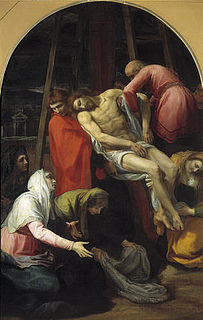
Bartolomeo Carducci was an Italian painter, better known as Carducho, the Spanish corruption of his Italian patronymic.

Vincenzo Foppa was an Italian painter from the Renaissance period. While few of his works survive, he was an esteemed and influential painter during his time and is considered the preeminent leader of the Early Lombard School. He spent his career working for the Sforza family, Dukes of Milan, in Pavia, as well as various other patrons throughout Lombardy and Liguria. He lived and worked in his native Brescia during his later years.
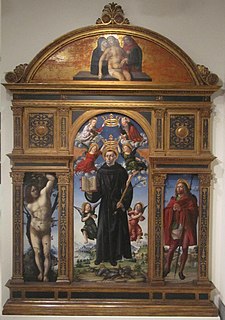
Vincenzo Civerchio or Civercio was an Italian painter of the Renaissance, born at Crema, and active also in Brescia, where there are some of his alter-pieces. One of his works is at the National Gallery of Art, Washington D.C., others in the Pinacoteca di Brera, Milan, Italy. He is said to be an imitator of Bernardino Butinone, Bernardino Zenale, and influenced by Vincenzo Foppa.
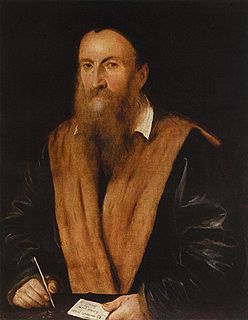
Girolamo Romani (Romanino) was an Italian High Renaissance painter active in the Veneto and Lombardy, near Brescia. His long career brought forth several different styles.
Sebastiano Filippi was an Italian late Renaissance – Mannerist painter of the School of Ferrara.

Bernardino Butinone was an Italian painter of the Renaissance, active mainly around Milan.

Lattanzio Gambara was an Italian painter, active in a Renaissance and Mannerist styles. It is likely that Gambara is the same 16th century painter referred to as Lattanzio Cremonese or Lattanzio da Cremona

Giovanni Martino Spanzotti was an Italian painter active in Lombardy and northern Italy.

Ottavio Amigoni was an Italian painter of the Baroque period, active in Brescia. He was trained by Antonio Gandini. Among his masterpieces is a large fresco about the life of Sant'Alberto in the Carmelite church of Brescia, painted with Gandino's son, Bernardino.

Filippo Maria Galletti (1636–1714) was an Italian painter of the Baroque period, active mainly in Tuscany, Parma, and Liguria. He was a pupil of the painter Ciro Ferri and Pietro Dandini. He became a Theatine priest, and painted religious works in Lecce and Livorno, and the church of Santa Lucia (Parma). He entered the Theatine order.
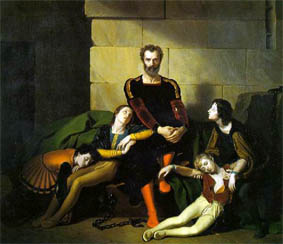
Giuseppe Diotti was an Italian painter of the Neoclassic style.

Giovanni Donato da Montorfano was an Italian painter of the Renaissance who was born, lived, and worked in Milan.
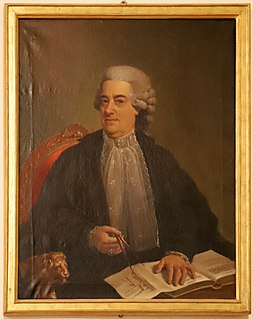
Giuseppe Valiani was an Italian painter.
Bartolomeo Valiani was an Italian painter.
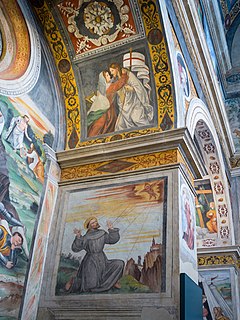
Paolo Caylina the Younger was a 16th-century Italian painter active mainly in Brescia in a Renaissance style.
Gaspare dell'Acqua was an Italian painter of the Renaissance period, active mainly in Genoa and Pavia.

San Barnaba is a deconsecrated Baroque-style, Roman Catholic church, located on Corso Magenta #44, near Piazzale Arnaldo, in Brescia, region of Lombardy, Italy. The church in the 20th century became an auditorium and conference hall, and home of the Conservatorio Luca Marenzio.

The Assassination of Saint Peter Martyr or The Martyrdom of Saint Peter of Verona is a 1530-1535 oil on canvas painting by Moretto da Brescia, now in the Sala dell'Esedra in the Pinacoteca Ambrosiana in Milan. It is influenced by Titian and Vincenzo Foppa, particularly Foppa's fresco of the same subject in the Portinari Chapel in Milan, whilst it itself proved the model for Caravaggio's The Martyrdom of Saint Matthew.
References
- ↑ Pittori Lombardi del quattrocento, by Francesco Malaguzzi Valeri, pages 155-156.
- ↑ Vincenzo Foppa of Brescia: Founder of the Lombard School, His Life and Work, by Constance Jocelyn Ffoulkes, Rodolfo Maiocchi, page 71.
| | This article about an Italian painter born in the 15th century is a stub. You can help Wikipedia by expanding it. |